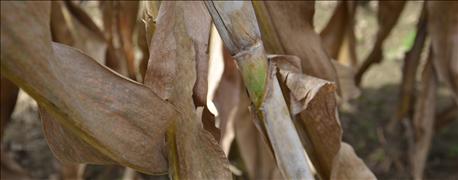
You felt like late-season disease hurt test weight and yield in 2016 corn. You booked hybrids back in September. Should you go back and switch to hybrids with more disease resistance? How much yield potential can you afford to sacrifice to get better disease resistance for next year?
Betsy Bower answers these questions with a question. “So do you know that the weather is going to be a carbon copy of 2016 in 2017?” she asks. Bower is an agronomist with Ceres Solutions, working primarily in west-central Indiana. She is also an Indiana Certified Crop Adviser.

YIELD VS. RESISTANCE? Disease caused yield and grain quality issues in 2016. How far do you go in selecting hybrids with strong disease resistance vs. just looking for yield potential?
“If you don’t know that, it’s not advisable to switch a hybrid based on one certain growing condition,” she says. “While there are companies that are supporting more disease-resistant hybrids, it is tough to know year in and year out that they will outperform other less disease-resistant hybrids.”
Common-sense selection
“While we typically see some gray leaf spot every year, does it always become a problem?” Bower asks. Her answer is no, not always. Sometimes it does, but sometimes it doesn’t. “It’s best to pick the hybrid that fits your soil, nitrogen plan and crop rotation. If you have cornfields that typically get disease year in and year out, then perhaps a more disease-resistant hybrid in those particular fields might be a better choice.”
Some bottomland fields, particularly in southern Indiana where humidity tends to be on the high side more years than not, might qualify for Bower’s latter recommendation.
If anyone should be preaching disease resistance after seeing it destroy fields in his area in 2016, it’s Darrell Shemwell, a CCA and manager of the Poseyville branch of the Posey County Co-op. Instead, he takes a more balanced approach.
“When choosing hybrids, you should try to select hybrids with good ratings for gray leaf spot and northern corn leaf blight, especially if planting corn following corn,” he begins. But he’s not finished.
“You need to choose varieties with the best genetics and yield capability,” he continues. “Diseases can be managed with fungicides and rotation.”
Shemwell notes that it takes 10 to 12 bushels of corn at current commodity prices to pay for a fungicide application.
Classic example
“This year we saw 50-bushel-per-acre yield increases in fields that were sprayed vs. fields that were not sprayed,” Shemwell says. “That’s primarily due to southern rust coming in. We saw some hybrids that had a better rating for southern rust do very well this year.”
However, that’s not the whole story, he says. “Those same varieties lagged well behind in yield last year when rust wasn’t a problem,” Shemwell observes.
“I still want to select hybrids that will yield the most,” he continues. “I will manage diseases with fungicides if deemed necessary next summer.”
About the Author(s)
You May Also Like




